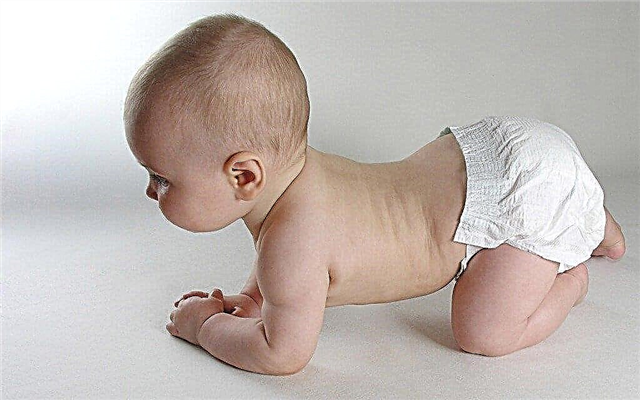
Many pregnant women develop various edema at 37 weeks gestation. This unfavorable symptom brings certain discomfort to the expectant mother.
How does it manifest?
Swelling in a woman during the third trimester of pregnancy occurs quite often. The severity of adverse symptoms can vary from mild to very severe.
Swelling can appear in various parts of the body. Many expectant mothers note that in the third trimester of pregnancy, their fingers begin to swell. This symptom is noticeable, as a rule, when wearing a ring. Removing it from the finger can be very difficult.

Fingers swell more often in women who suffer from any diseases of the kidneys or urinary tract. In the third trimester, the uterus puts a lot of pressure on these organs. This contributes to some violation of the outflow of urine and its stagnation. Ultimately, the accumulation of fluid in the body leads to edema.
Also, puffiness can appear on the face. Typically, swelling appears under the lower eyelids. At the same time, the contours of the face also change - it becomes more round, its configuration changes. Swelling under the eyes appears most often in the morning. In the evening, they decrease.

Swelling of the legs is another common option. In this case, they "rise" from the feet to the hips. Most of the edema is concentrated in the lower leg area.
The expectant mother can also identify swelling on her own. To do this, she should gently press on the skin at the site of the swelling. If a fossa remains in the place of pressure for some time, then this indicates the presence of edema.
Another characteristic sign of puffiness may be too much weight gain. Control over this indicator is necessarily carried out for all expectant mothers. In each period of pregnancy, the rates of weight gain are different. Such a simple research method allows you to accurately determine the presence of edema in the female body, even at home.


How to deal with this condition?
When edema appears, the expectant mother should definitely consult with her doctor. In some cases, their development is facilitated by some pathology of the course of pregnancy. Only the attending doctor who observes the woman and knows the peculiarities of the course of a particular pregnancy can distinguish the norm from pathology.
When edema develops, it is very important to determine the cause that contributed to their appearance. So, the occurrence of severe swelling contributes to the use of too salty food. Drinking disorder is also a common cause.


In order to assess the water balance, the doctor will definitely recommend the expectant mother to monitor how much she drinks and excretes urine. In this case, a pregnant woman must write down the results obtained in a notebook and notebook. If the expectant mother drinks much more fluid than her urine is released, then the risk of edema increases several times.
In some cases, the development of edema is accompanied by other clinical symptoms. So, the expectant mother may have protein in the urine. In this case, the doctor should definitely assess the degree of functional disorders that have arisen. A decrease in protein in the female body during the third trimester of pregnancy may be the result of dangerous pathologies.


Treatment methods
You can get rid of edema through a special diet and correction of the daily regimen. However, in some cases, these measures are not enough. In this case, doctors prescribe drugs that reduce the level of fluid inside the body.
It is important to remember that such drugs are prescribed only by a specialist, and their uncontrolled intake can be very dangerous and cause electrolyte disturbances. The selection of dosage, treatment regimen and duration of drug use is carried out individually.
When edema appears on the body of the expectant mother, it is imperative to reduce the use of salty foods. It is better to cook food without adding table salt. Salt the dishes already on the plate. Women who suffer from high blood pressure on the background of the appearance of edema should not consume more than 5 grams of sodium chloride per day. They should refuse chips, crackers, canned and pickled foods.


To normalize the water balance in the body, the expectant mother should drink at least a liter of fluid per day. It should be noted that in some cases the volume of water may be lower. Usually such recommendations are given to women suffering from severe chronic kidney disease or cardiovascular insufficiency.
Some herbs have an excellent diuretic (diuretic) effect. So, during pregnancy, lingonberry leaves can be prescribed. They can be brewed as tea. Expectant mothers should use this drink 2-3 times a day. It is possible to reduce the manifestation of puffiness with the help of fruit drinks. They can be made with cranberries or lingonberries. When preparing berry fruit drinks, do not oversweeten them.


Many mothers who develop swelling begin to protect themselves strongly from various physical exercises. This is not entirely true. Correct physical activity must be present. Regular walks in the fresh air will have a positive effect on the entire female body, and will also help reduce swelling.
If the expectant mother's swelling appears mainly on her legs, morning exercises will help her. It is better to do it in the morning, immediately after waking up, without getting out of bed. Raising the legs up will help to normalize venous return and reduce the manifestations of edema. It is better to do these exercises every morning.
It is very important for expectant mothers suffering from edema to choose the right shoes. It is better to leave high-heeled shoes for the period after the baby is born. Shoes should be comfortable and not squeeze the foot. When worn, boots should not cause the appearance of edema on the shins. Improperly selected footwear contributes to the violation of venous outflow on the legs, which leads to the appearance of edema.


For information on what to do with edema at 37 weeks of gestation, see the next video.



